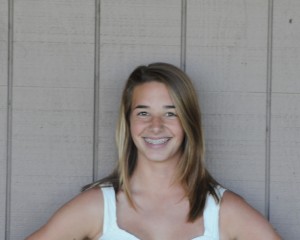When dissecting the components of a chocolate chip cookie, one thing is very clear: without the chocolate chips, the otherwise delectable treat tastes bland. What people may look past in their analyses is the perfect combination of the oozing chocolate pieces and the soft, sweet dough; the eggs, of course, hold this simple yet scrumptious mixture of ingredients together. For most, the same is true in sports.
Onlookers focus on individual pizzazz but disregard the importance of team unity, which keeps everything intact. Like the absence of eggs in cookies, if a natural bond is not formed between teammates, the squad will be left picking up the individual components of the potentially delicious, but crumbled treat.
In the Palo Alto sports community, the importance of team chemistry is held in high esteem. Unlike club sports, where the main focus is on individual improvement, the primary purpose of a high school squad is to represent one’s school. In the high school arena there is a larger emphasis on team experience, and for many Paly athletes, participating in a sport means a chance to extend beyond regular social circles and form new relationships.
On the flip side, Vikings strive to win. With a plethora of trophies in trophy cases and numerous league and Central Coast Section titles under their belts, Paly athletes recognize that without exemplary team chemistry, championships cannot be achieved.
Teams in the Paly community build strong team unity in a variety of ways. Viking squads recognize that it is necessary to go beyond the confines of the field and establish a more intimate relationship between teammates through team dinners and other planned activities.
The boys’ and girls’ soccer teams bond through weekly pasta feeds, a dinnertime potluck in which the squad loads up on carbohydrates and plays fun games to prepare for the game the following day and form stronger ties amongst teammates.
“It’s really hard to develop team chemistry only by playing with new people every day,” Ethan Plant (’10) said. “Pasta feeds let you met them not just when you in a pressure situation. It’s a lot easier to develop the relationship you need in such a fun setting. The team performs better when every one is comfortable with each other.”
The Paly girls’ water polo team organizes a preseason retreat to ease the infiltration of underclassmen on the team and strengthen team unity.
“Last year we went camping and the year before that we went to Santa Cruz and stayed at a hotel and played on the beach,” Haley Conner (’11) said. “We do lots of activities like scavenger hunts and dance.”
The team does additional team bonding during “Hell Week”, an intense week of double-day practices during preseason.
“For the water polo team, the biggest portion of team bonding comes from our ‘Hell Week,” Connor said. “That is when we do our 80s run. We dress up in 80s attire and jog down El Camino and through Town and Country. It is a way for all of the players to feel united through something other than water polo and be able to form a deeper connection with the other girls on the team.”
Paly girls’ lacrosse attributes their success on the field to the mutual understanding among teammates that the main goal is to improve.
“None of us hold grudges and are able to move past things and come together for our common goal,” Natalie Gauthier (’10) said. “That goal is not only to be the best team we can be, but to always leave the field better lacrosse players. Our coach Jen always tells us that every minute you are playing you need to be improving, otherwise you are just wasting your time. We challenge each other to be the best we can be.”
For the Paly baseball team, team chemistry comes in the form of the little things.
“We all joke around and play jokes on each other to have fun and stay relaxed,” outfielder Jeff Cohen (’11) said. “Half our team took an adventure to Lake Lagunita and ended up swimming through the water.”
One of the most difficult obstacles posed by the assemblage of up to four different grade levels in one team is the cohesion of all members of the team despite the age gap. However, once this gap is closed, friendships formed across class lines and the overall environment became more comfortable and allow for relationships to develop beyond the field.
“A lot of it [team chemistry] had to do with the upperclassmen being so open and accepting,” midfielder Lily Seedman, who plays on the varsity girls’ soccer team, (’12) said. “The fact that we were all so close made my experience so much better and, even though the season is over, we are still continuing our bonding.”
On the other hand, many high school teams find it challenging to create a fluid connection between teammates who only play together for three months out of the year. However, for the newly created Paly boys’ lacrosse team, five out of the ten starters of the team come from the same club team.
“Many of the returning Tomahawks have played together at one time or another for the same club, which provides camaraderie that takes most teams a long time to develop,” Elliot Beckstrom (’11) said. “Since we have played together, we also know each others’ individual playing styles. This helps the team to function smoothly because we all share the same understanding of what a certain player will do in a situation.”
Kris Hoglund (’12), another member of the Tomahawks and the varsity boys’ lacrosse team, expresses a similar sentiment.
“We know the other guys’ styles of play and tendencies, making on-field communication easier and the overall game flow better,” Kris Hoglund said. “You always know what someone is going to do because you’ve played with them so much, enabling us to anticipate the action, cutting out reaction time.”
Luckily for the members of the Tomahawks lacrosse team, their old club coach Craig Conover is also the coach of the Paly team, which allows them to be familiar with the style of play the coach implements in game situations.
“Most of us have played for coach Craig, which makes the entire team run even smoother,” Beckstrom said. “We know what we have to do at practice and we know how we will run a game usually. Some plays from prior years have also been brought back, which is awesome because it expands our arsenal.”
Chemistry between teammates in such sports as pairs tennis and relays in track and field is even more crucial because familiarity with a teammate’s skill set can be the difference between a win and a loss. In tennis, this intimate relationship with one’s court-mate plays a particularly crucial role because both members must have a similar sense of court-awareness.
“It is very important to have good chemistry with your doubles partner,” Paly tennis player, Alex Freeman (’10). “They are covering a part of the court that you can’t physically cover. If you don’t have trust in that person, then it’s going to throw off your entire game.”
Daniel Jones (’12), a member of the 4×100 relay squad, expresses a similar sentiment regarding trust amongst members of the relay teams.
“Team chemistry is essential in the relay because you need to be able to trust that your other team member will carry out his duties,” Jones said, “You have to know that he will be able to give you the baton when you need it and where you need it. This idea of mutual trust plays a huge role.”
Erika Hoglund, who also runs track on the Paly team, holds a contrasting opinion and believes that technique plays a bigger factor in the success of relays team.
“It [the relay] has more to do with practice than with chemistry,” Erika Hoglund said. “Having a good hand-off comes from constant repetitions and good form. You can hate the person you’re handing off to, but if you both do what is required, everything will go fine.”
Despite the doubles component and relay factions, the other elements of tennis and track and field are individual. Other sports, such as cross-country, swimming and wrestling, also focus on solo performances. However, many Paly athletes who participate in both team sports and individual sports value the importance of team chemistry in equal standing in both areas of competition.
“It [team chemistry] is important in basketball because you’re playing with each other,” Lauren Mah (’10) said. “However, it is just as important in tennis because having team chemistry means that each player is in sync with the team dynamic and wants to be at the court all the time. A tennis team can fail when you don’t have a good team dynamic and people don’t want to play together anymore.”
Mah, who plays tennis, basketball, and lacrosse, recognizes team chemistry as involving a cohesive team mentality. On the other hand, Freeman, who participates in both soccer and tennis, defines team chemistry as the reliance of teammates on each other, which can be applied to both individual and team sports.
“Both sports have teammates relying on each other for a victory,” Freeman said. “So that companionship and friendship that you find on teams is crucial for both sports.”
Erika Hoglund holds an opposite viewpoint. She recognizes a clear divide in the necessity of team chemistry between individual sports and team sports, arguing that personal relationships are crucial in soccer but do not play a role in track and field.
“While it’s nice to have friends on the team to hang out with between races, these friendships are not pivotal for success,” Hoglund said. “In soccer, you need to be able to trust your teammate. The whole game is based on teamwork, improvisations and fluidity, as opposed to the practiced work of track. You need to cooperate with the person you’re improvising with, but not with the person you’re handing the baton to.”
Regardless of whether a sport has a more individual focus or is more interested in the team as a whole, the role of teammates as a supporter is explicit in both areas of competition.
“We all try to watch each other’s matches after our own matches are finished and support each other during practice,” singles and doubles player Gracie Dulik (’10) said.
Teammate Mah communicates a similar view.
“Team chemistry isn’t just about how you show it in a game,” Mah said. “It’s about how you react to one another, and how you push each other to get better.”
The bond between teammates is crucial to the overall performance of the team in competition, but also creates a chance for people to come together over a common love of sports and establish relationships that would not normally be formed. Along with the masterful product that results from finding the perfect combination between the independent components and the ingredients that hold the cookie together, comes the comfort of eating the delectable dessert.
“I have never been on a team where I have felt as accepted by and comfortable with everyone,” Hoglund said. “Everyone, from the seniors to the freshman, felt comfortable with each other. This year, even between sophomores and seniors, everyone felt like they were part of the same group. We weren’t different classes on the field, just one team.”





